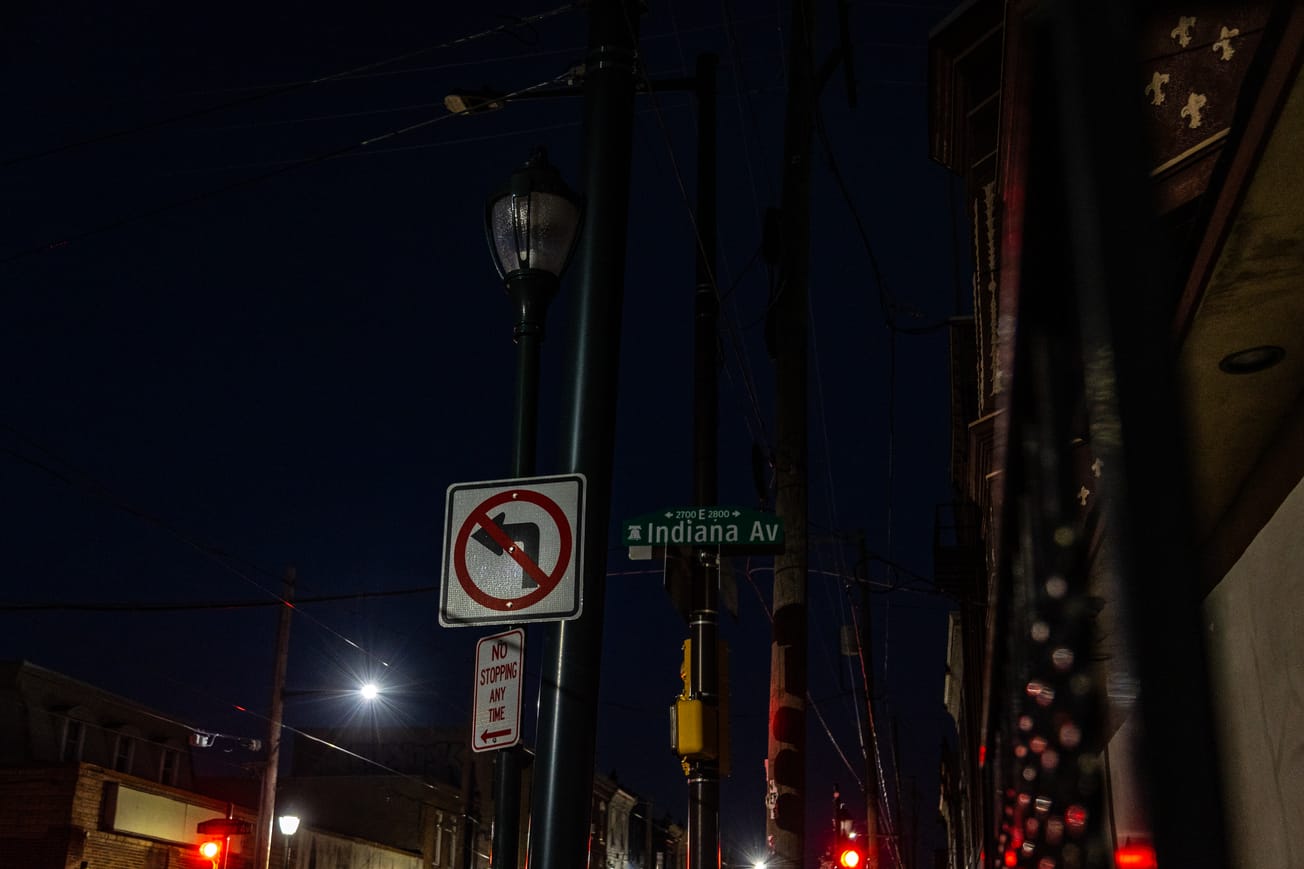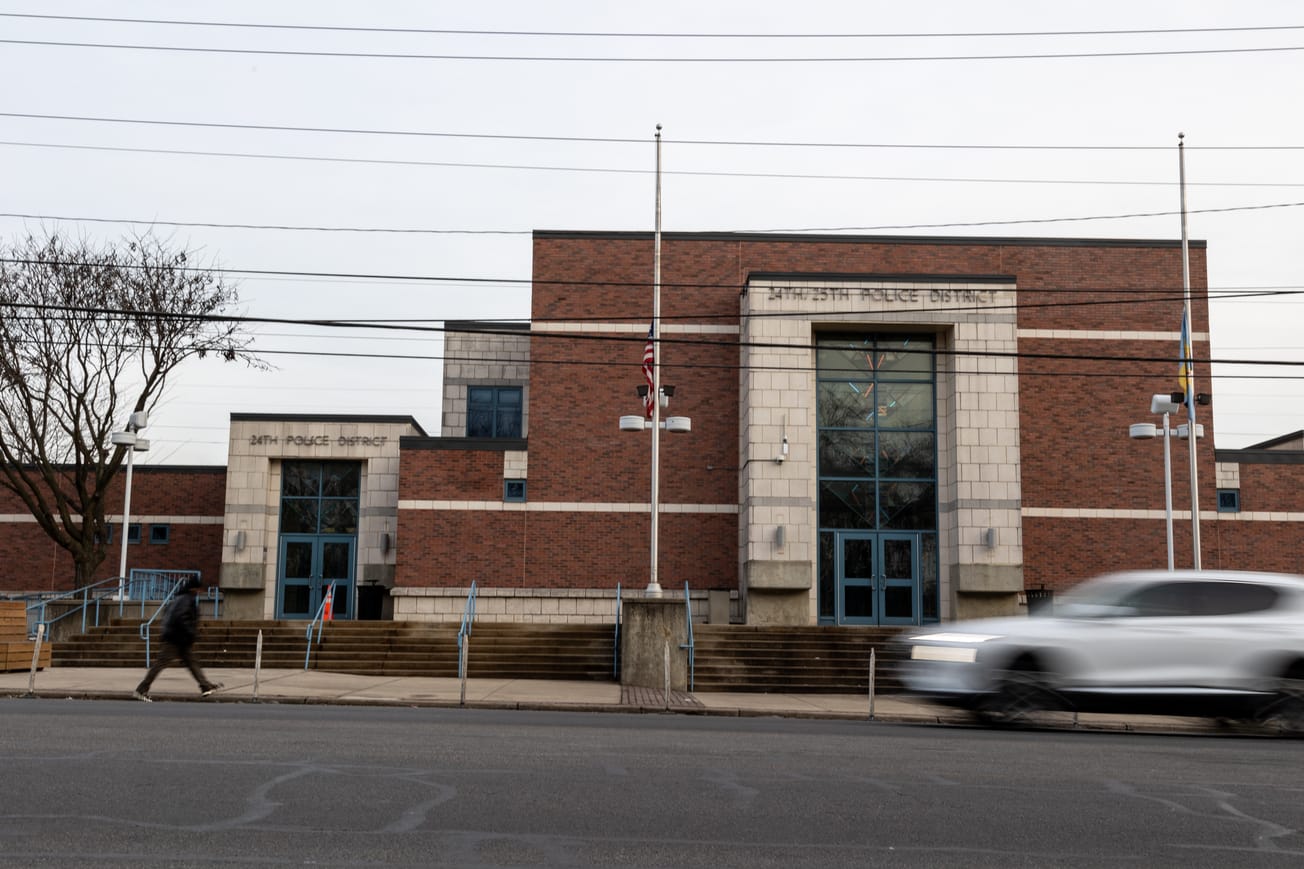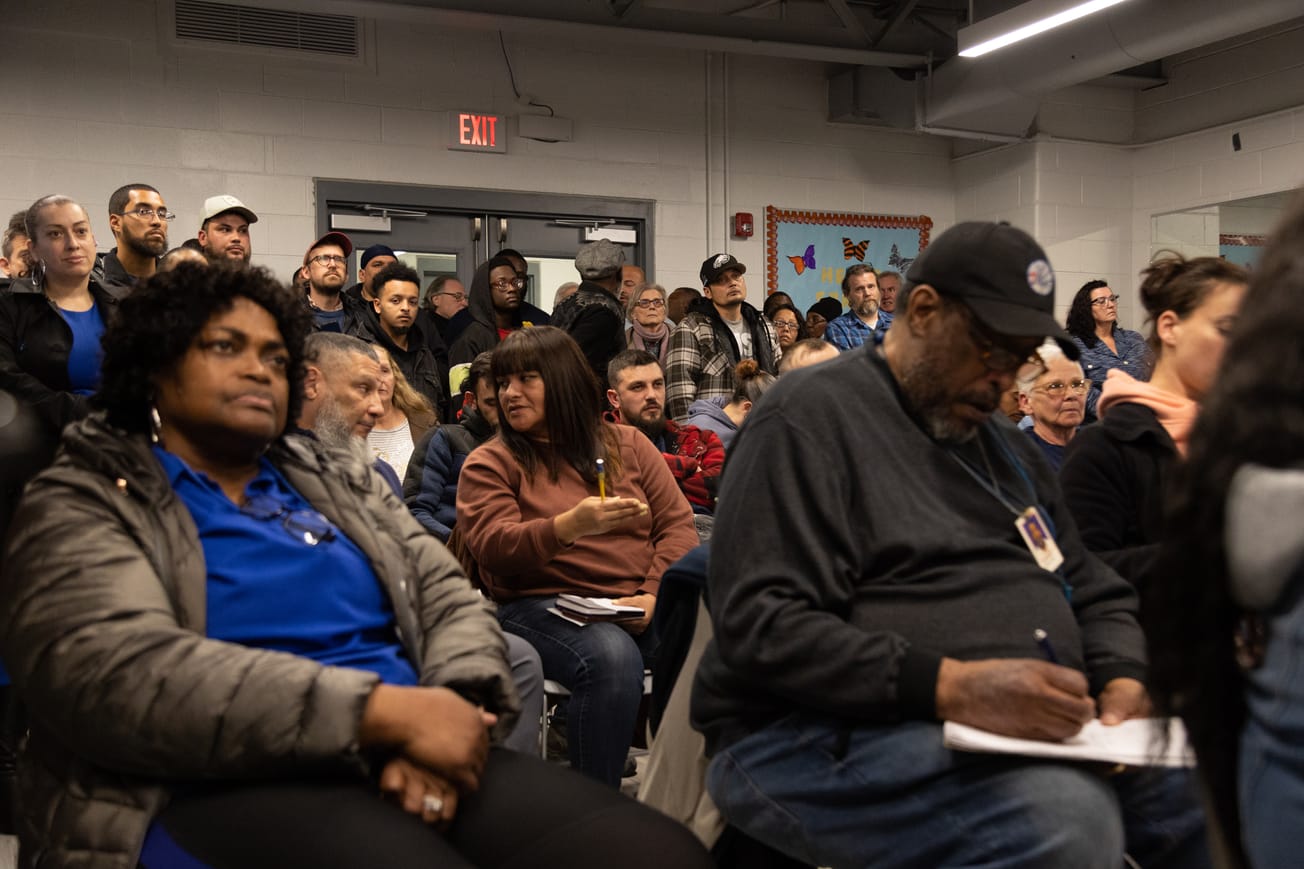Philly police have a “tentative strategy” to clear school pathways in Kensington and nearby neighborhoods affected by the open-air drug market, but with many students heading back to school next week, details remain unclear.
“I want the children to be able to go to school without having to see anyone using drugs, and I don’t need them to pass through trash that stinks or any type of hazardous material,” said Sgt. Mike Hanuscin, who leads the East Service Detail, which is part of the city’s East Division.
Hanuscin, who spoke about the Philadelphia Police Department’s (PPD) plans with a small group of Port Richmond residents at a civic meeting Thursday night, said police will be clearing people and trash for kids’ routes to school starting “probably in the next three weeks.”
“That is our main concentration now,” he said.
Hanuscin said he plans to adjust his unit’s schedules to start the first shift earlier, at 5 a.m. instead of 7 a.m., and start the second shift earlier for when school ends around 3 p.m. Over the last six months, his unit has expanded from nine to 18 officers, he said.
There are 42 schools in the East Division, which includes the 24th, 25th, and 26th police districts, according to the School District of Philadelphia.
According to PPD spokesperson Sgt. Eric Gripp, the information Hanuscin shared at the meeting is part of a “tentative strategy” that is still “being finalized with other city agencies.”
Gripp said PPD will meet with school principals next week to “confirm how those strategies will operationalize.” He said there will be an increased police presence, but “there is no plan to displace anyone while creating safe passages for students to and from school.”
Gripp would not clarify the geographic boundaries for the plan or what is considered a “safe passage” for school.
The East Service Detail typically works with the city’s Community Life Improvement Program (CLIP), Merakey, and Police-Assisted Diversion (PAD), according to Hanuscin.
As of Friday, neither PAD nor behavioral health provider Merakey were involved in the plans Hanuscin described, according to Kurt August, the director of the city’s Office of Criminal Justice, who oversees the PAD program and Merakey staff assigned to PAD’s mobile unit.
The mobile unit starts driving around the neighborhood at 6 a.m. and PAD’s office, located on Allegheny Avenue near F Street, opens at 7 a.m., August said.
“We’d be willing to pitch in with what [the police] need, but I would definitely need time to alter [Merakey’s and PAD’s] schedules,” he said.
After Thursday's civic meeting, some residents expressed concerns about the city’s approach.
“Where are they moving them to?” said Angie Carrion, who lives in Port Richmond.
Carrion said trash cleanup makes sense because children often walk past used needles and trash on the sidewalks to get to school. Still, she had questions about the city’s treatment of people living on the street.
“The whole moving people – there’s just something about that element of it. It almost feels like you’re talking about trash, and these are human beings,” she said. “It’s just like a band-aid over a burst pipe.”
Carrion and Port Richmond resident Claribel Nuñez wondered what local officials are doing to address the root causes of addiction, homelessness, and poverty.
“The cost of living has increased, there’s no jobs,” said Nuñez. “The majority of us are closer to being one of them.”
Have any questions, comments, or concerns about this story? Send an email to editors@kensingtonvoice.com.






